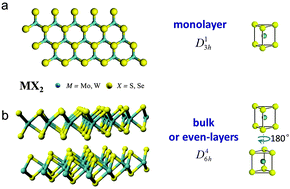An optical spectroscopic study on two-dimensional group-VI transition metal dichalcogenides
Abstract
The ultimate goal of making atomically thin electronic devices stimulates intensive research on layered materials, in particular the group-VI transition metal dichalcogenides (TMDs). Atomically thin group-VI TMD crystals with a 2H stacking order emerging as a family of intrinsic 2-dimensional (2D) semiconductors with a sizeable bandgap in the visible and near infrared range satisfy numerous requirements for ultimate electronics and optoelectronics. In addition, the characteristic inversion symmetry breaking presented in monolayer TMDs leads to non-zero but contrasting Berry curvatures and orbit magnetic moments at K/K′ valleys located at the corners of the first Brillouin zone. These features provide an opportunity to manipulate electrons’ additional internal degrees of freedom, namely the valley degree of freedom, making monolayer TMDs a promising candidate for the conceptual valleytronics. Besides, the strong spin–orbit interactions and the subsequent spin–valley coupling demonstrated in atomically thin group-VI TMDs open up potential routes towards quantum manipulation. In this tutorial review, we highlight recent advances in the optical study on electronic structures, vibrational properties, excitonic effects, valley dependent optical selection rules, and the interplay of valley, spin, and layer degrees of freedoms in this class of atomic 2D semiconductors including MoS2, MoSe2, WS2, and WSe2.

- This article is part of the themed collection: 2D Transition Metal Dichalcogenide (TMD) Nanosheets

 Please wait while we load your content...
Please wait while we load your content...